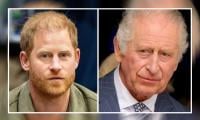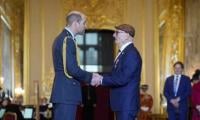Benazir Bhutto’s unfinished battle
We met her in Lahore three days before her assassination and advised her against going to the Liaquat Bagh public rally in Rawalpindi on the basis of strong rumours – known to everybody – about the probability of an attack on her. But she shrugged off our impassioned pleas, insisting that mobilising people was her only option against terrorism and authoritarianism. She knew it was coming her way and yet she dared to challenge them in her last battle – which, however, still remains unfinished.
Benazir Bhutto (or BB) was assassinated by a coalition of Al-Qaeda-Taliban and rogue elements. This has been established by multiple levels of investigations by the UN, Scotland Yard and local investigators, despite the obstructions caused by the then powerful president Gen Musharraf and his lackeys. Most of her killers have met their fate, but there are still some untouchable perpetrators. Those who blame the PPP for its lack of pursuit seem to be using the much-used idea of: ‘kill a Bhutto, blame a Bhutto’. As in Murtaza Bhutto’s cold-blooded murder by law-enforcement personnel, the blame is conveniently shifted to the much exaggeratedly maligned Asif Ali Zardari – him being seen as the political ‘beneficiary’.
BB’s assassination, right in the glare of TV cameras, shows that she came under multiple attacks from various sides by sharp-shooters and suicide bombers. It was a very well-planned attack; and those who were in control of the venue dutifully cleaned up later, presumably to defeat forensic investigation. Yet all the links were established, except those of the unreachable at the highest levels. The UN investigations, however, established that BB became a victim of a conspiracy by powerful forces and non-state actors. BB had in fact roped in Gen Musharraf under an otherwise infamous NRO that got Musharraf to doff his uniform. Yet, she broke the terms by staging a historic comeback.
I was there to watch her rally in Karachi on her homecoming and thought at the time that the grand welcome might not be tolerated by those who had written her off or those who were furious over her breach of the agreement, which had barred her from participating in the coming elections. We all saw the horrifying attack on her welcome rally near Karsaz in Karachi. BB then went on to raise the defiant flag on the deposed Chief Justice Iftikhar Chaudhry’s residential prison. She not only made Nawaz Sharif’s return possible, but also persuaded him not to boycott the elections. That turned the tables on Gen Musharraf, who had planned to remain in office for yet another term.
In her whirlwind campaign for the 2008 elections, BB got a huge response for her social-liberal and secular agenda against the violent extremists and their patrons. She was able to build a broad coalition of democratic, progressive and civil society forces against the threat of religious extremism. BB had engaged the best of the civil society’s minds and the progressive intelligentsia to come up with an alternative agenda for social and constitutional reforms – the Benazir Income Support Programme being one of the examples. I recall the various interactive sessions she held with rights activists, constitutional experts, economists and leaders from various walks of life to ensure good governance, provision of social services, eradication of poverty, equality of citizens regardless of their religion, equality of women, civilian supremacy, peace with neighbours and how to eliminate terrorism and defeat their ideology.
An overwhelming victory was being predicted for BB, even in Punjab where Nawaz Sharif had not yet recovered from the big split in his party, and where Imran Khan was yet nowhere on the political horizon. Her sudden killing almost on the eve of the elections created a huge void that allowed the other surviving national leader, Nawaz Sharif’s, comeback in Punjab.
The void created with BB’s martyrdom caused the greatest damage to democratic and progressive politics, which was then compromised by Zardari’s pragmatist adjustments; though that was done to keep the democratic transition on track. Credit goes to Asif Ali Zardari that he made Gen Musharraf resign under the threat of impeachment, and for transferring power back to parliament and ensuring greater provincial autonomy under the 18th Amendment to the constitution. But Zardari’s mistrust of popular politics and the bad governance of two PPP prime ministers along with the poor performance of the Qaim Ali Shah government in Sindh ended up causing the greatest damage to the PPP’s appeal across the country, Punjab in particular where the Sharif model was able to show its glitter.
Zardari committed the greatest mistake by giving a walkover to Imran Khan in the hope that it would divide the dominant conservative forces in Punjab. Imran Khan benefitted from the vacuum created by the PPP leadership, which even failed to retain its mass base among the poorer sections of society in Punjab. By the time the 2013 elections were held, the PPP had lost its ground in Punjab. The terrorist threat to the PPP and the ANP in Punjab and Khyber Pahtunkhwa also kept these two liberal parties out of the electoral contest. All these factors facilitated the rise of Imran Khan as an alternative to Nawaz Sharif in Punjab and to the ANP in KP.
The PPP continued to politically lose public support for its ‘reconciliation’ mantra. The way the establishment had groomed Nawaz Sharif as a challenger to BB, Imran Khan was propped up by the powers that be to challenge the PML-N in Punjab. The apolitical and traditionally anti-politicians urban middle classes found in their non-political hero Imran Khan the grave digger of the politics of the old regime. Their conservative and pseudo-liberal values found an expression in a phenomenon that was a mix of extremely reactionary, authoritarian and populist whims bordering on fascism.
The PPP was principally right in defeating attempts to derail the democratic transition as opposed to Imran Khan who recklessly pursued an adventurist course to bring down the representative system in the name of fighting corruption – the rallying call for the middle class and their moralist reactionary values. Imran Khan exploited the weaknesses and shortcomings of the PPP and the PML-N, their alleged corrupt practices and mal-governance in particular. The anti-Sharif frustrated PPP activists in the urban areas of Punjab expeditiously found in Imran Khan to be the real challenger, but the PPP constituency among the urban and rural poor became dormant and did not find any attraction in the PTI’s appeal. The downtrodden sections of the polity and the liberal-progressive intelligentsia have been left with no alternative after the demise of BB.
The PPP is struggling to fill BB’s void. The damage done to the PPP’s image as a party of the people is enormous. Yet we see an evolving popular response to her political heir – Bilawal Bhutto Zardari, who is struggling to revive BB’s legacy while standing in his father’s shoes of political expediency. He has to choose between BB’s legacy and his father’s feudal and manipulative politics. Just as Nawaz Sharif cannot reconcile his popular defiance with the candidacy of his capitulationist-brother Shahbaz Sharif’s for premiership, Bilawal cannot emerge a leader in his own right while reviving BB’s social-liberal legacy and submitting to his father’s power-politics. His focus should not be getting power in the next elections – nor can he – but reviving a social-democratic alternative.
So far, Bilawal has come up with vibrant social-liberal ideas, but the real challenge before him is to redefine a consistent democratic and socially emancipatory agenda, and reviving the trust of the people and progressive intelligentsia. BB’s void is enormous and her battle for a progressive, tolerant and democratic Pakistan remains unfinished. Let Bilawal try.
The writer is a senior journalist. Email: imtiaz.safma@gmail.com
Twitter: @ImtiazAlamSAFMA
Email: imtiaz.safma@gmail.com
-
 'Hotel Transylvania 5' Gets Major Update By Film's Star
'Hotel Transylvania 5' Gets Major Update By Film's Star -
 PlayStation Plus Adds Over 300 Hours Of Gameplay Across Massive New Titles
PlayStation Plus Adds Over 300 Hours Of Gameplay Across Massive New Titles -
 Mandy Moore On Mom Friendships Amid Ashley Tisdale's Mom Group Claims
Mandy Moore On Mom Friendships Amid Ashley Tisdale's Mom Group Claims -
 Justin Baldoni Objects To Removing Taylor Swift's Name From Case
Justin Baldoni Objects To Removing Taylor Swift's Name From Case -
 Princess Eugenie, Beatrice Warned About Royal Titles After They Turn Down Prince William's Request
Princess Eugenie, Beatrice Warned About Royal Titles After They Turn Down Prince William's Request -
 Samsung One UI 8.5 Adds Fully Customisable Unlock Animations
Samsung One UI 8.5 Adds Fully Customisable Unlock Animations -
 Injured By Bullets, New York Father-son Duo Beat Alleged Gunman With A Bat
Injured By Bullets, New York Father-son Duo Beat Alleged Gunman With A Bat -
 Annular Solar Eclipse 2026: Here's Everything To Know About The ‘ring Of Fire’
Annular Solar Eclipse 2026: Here's Everything To Know About The ‘ring Of Fire’ -
 Blake Lively Gives Up Hopes Of Taylor Swift Reconciliation?
Blake Lively Gives Up Hopes Of Taylor Swift Reconciliation? -
 Advocacy Groups Take Aim At Elon Musk, Urging Google, Apple To Remove X, Grok
Advocacy Groups Take Aim At Elon Musk, Urging Google, Apple To Remove X, Grok -
 BAFTA Nominees For 2026 Rising Star Award Revealed: See Full List
BAFTA Nominees For 2026 Rising Star Award Revealed: See Full List -
 Kate Middleton 'quietly And Carefully' Planning Prince William's Coronation
Kate Middleton 'quietly And Carefully' Planning Prince William's Coronation -
 'Glee' Star Slams Hilary Duff’s Husband Over 'petty' Remarks About THIS Actress
'Glee' Star Slams Hilary Duff’s Husband Over 'petty' Remarks About THIS Actress -
 Chinese Parents Turn To AI Tutors To Ease Homework Stress
Chinese Parents Turn To AI Tutors To Ease Homework Stress -
 Fire Crews Bring Massive Wolverhampton Factory Blaze Under Control
Fire Crews Bring Massive Wolverhampton Factory Blaze Under Control -
 Britney Spears Obsessed With Prince William And Harry?
Britney Spears Obsessed With Prince William And Harry?



